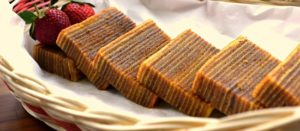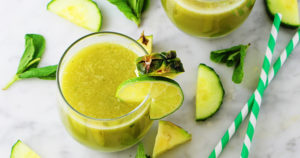Eid-ul-Azha is a festive celebrated during the month of Zil Hajj. This year the event was celebrated during the 22nd to 24th August 2018.
With eid-ul-azha comes along a lot of food. Different kinds of dishes are cooked around the world following the sacrifice of an animal.
Most Muslims consume red meat after an animal is sacrificed. the animal sacrificed is divided into three parts out of which one part is distributed among the poor, one part is distributed among relatives and the third part is kept for themselves.
The meat is then used to cook several dishes to celebrate this festive.
Let’s take a brief look at what foods are cooked where:
1. Maqluba

This traditional dish is popular in Middle Eastern countries – it consists of fried vegetables, meat (usually chicken, turkey or lamb) and rice cooked together in a pot which is then flipped upside down to serve as a large savory cake.
2. Curries, Tagines and Stews

Whether vegetarian or meaty, an Eid al-Adha feast is likely to include an array of curries, tagines or stews depending on the cuisine of where the celebrations are taking place. In Jordan, for example, Mansaf (a traditional Arab dish made of lamb cooked in a sauce of fermented dried yoghurt and served with rice or bulgur wheat) is typically consumed on the first day of Eid al-Adha.
3. Rice and Couscous

From chicken biryani with saffron and sultanas to apricot-spiked couscous, grain dishes are an essential part of an Eid al-Adha celebration and often served to accompany the stews, tagine and curries.
4. Bolani

In Afghanistan, Bolani is a popular food during Eid – it consists of flatbread stuffed with an array of fillings, from potatoes to green pepper, and is usually baked or fried to create a thin crust, before being served with yoghurt. Afghanistan Eid celebrations tend to be quite child-focused, and bolani are enjoyed by the whole family.
5. Ma’amoul

These shortbread-esque cookies are filled with nuts, dates or figs and provide a delicious sweet note on which to end the feast. They’re usually shaped into balls, domes or flat cookies, and plates full of the biscuits are often exchanged between neighbors and relatives as gifts.
6. Tufahija

A favorite amongst Bosnians, this pudding is made by poaching apples in sugar water, stuffing them with nuts and topping with whipped cream or crème fraîche. It’s usually served in large glass bowls and enjoyed with coffee too.
7. Lapis Legit

This Indonesian cake (also known as spekkoek) is often made for celebrations – a Dutch legacy from colonial times, it consists of layer upon layer of spiced cake, bursting with cinnamon, cardamom and nutmeg.
8. Seviyan

In South Asia, seviyan kheer (also known as sheer kurma) is often eaten for breakfast after Eid prayer – it’s made by cooking vermicelli (thin wheat pasta) with butter, milk and sugar, as well as an array of spices, nuts or saffron. The dish is popular at Eid al-Fitr too, where celebrations tend to focus more on sweet rather than savoury foods in contrast to Eid al-Adha.






































